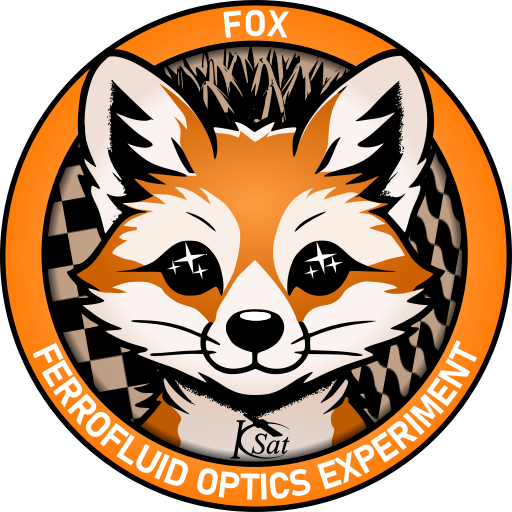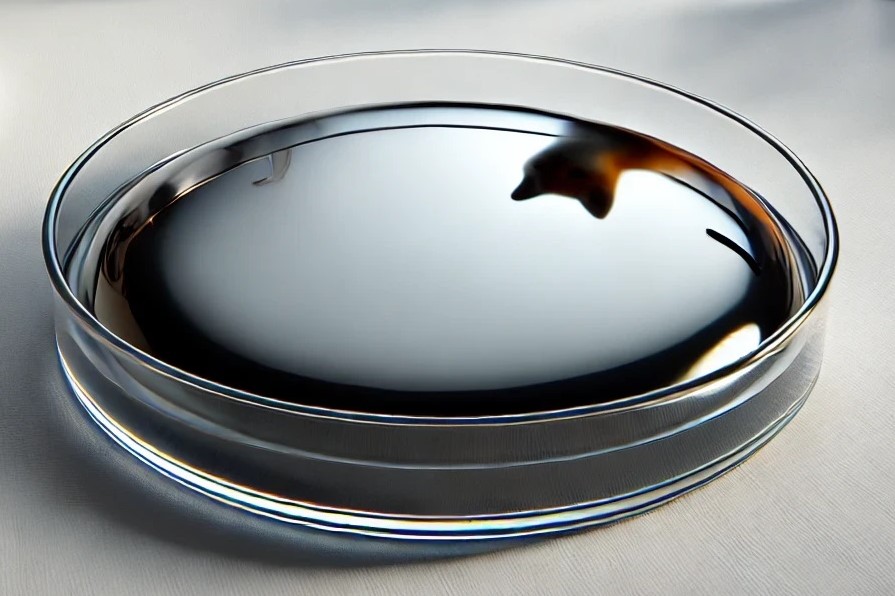FOX
Ferrofluid Optics eXperiment
KSat e.V. has been researching the use of ferrofluids for space applications for some time now. We have already tested possible applications with PAPELL, FARGO and FerrAS in the past. Among other things, low-wear switches, a reaction wheel and pumps were developed. The experiments have flown on sounding rockets and the International Space Station and have so far been a great success – both in terms of the results of the scientific analyses and in public relations work. In future, however, we also want to explore new areas.
One potential area for space applications that has not yet been researched by KSat e.V. is optics. Here we have come across magnetically deformable mirrors that can be realised using ferrofluid. There is already research on this, but it is not intended for use in space. We therefore want to carry out a feasibility study in preparation for a future project (e.g. on a REXUS rocket) in order to lay the foundations for a possible application.
Our experiment
Ferrofluidic mirror
As part of this experiment, the optical properties of ferrofluid and the realisation of a liquid mirror mechanism are to be investigated. In the long term, the mirror should be able to perform wavefront corrections, for example.
Wavefront corrections are optical adjustments that aim to compensate for distortions or aberrations in a light wave in order to smooth the wavefront – the area of the same phase – and thus achieve optimum focussing or image quality. This technique is often used in adaptive optics, for example in telescopes, microscopes or laser systems, to correct influences such as atmospheric interference, irregularities in lenses or mirrors and other sources of error.
The aim of FOX is to develop and test such a liquid mirror made of ferrofluid. Participation in a microgravity programme will also be considered to investigate its suitability for use in space.
We want you!
Has FOX piqued your interest? We are always on the lookout for new members!
Whether you are just starting out in your first semester or are already an aerospace expert and no matter what you are studying, we can find an exciting position for everyone in our team. All our projects are organised in subsystems that are responsible for different sub-areas. If you already know what you want to do, get in touch with us!
FOX Subsystems
Structure
The experiment needs a home. This home should not only hold all the components in place and ensure that no ferrofluid escapes. It also has to transport all the heat that is generated to the outside.
Simulation
A simulation should help to train and test the data evaluation of deflectometry.
FPGA
Because our data consists of images from our camera, we need a way to process a lot of data, as fast as possible. For this we want to use a FPGA, which needs to be integrated and programmed.
Data
The data we produce needs to be processed before we can make conclusions about the results. These processes are to be developed and optimized for our application.
Power
The actual power house of the experiment, which deforms the mirror, are electromagnets. These electromagnets need a lot of energy. Both – the electromagnets aswell as the power management – have to be designed and built.
More about this topic
Ferrofluids
Ferrofluids are fascinating materials composed of tiny magnetic particles suspended in a liquid. These particles are often made of iron or iron oxides and typically have a size of just a few nanometers. The unique property of ferrofluids lies in their ability to respond to magnetic fields. When an external magnetic field is applied, the magnetic particles align, creating impressive visual effects that can range from waves to sharp structures.
The discovery of ferrofluids dates back to the 1960s when they were originally developed for use in space applications. The idea was to stabilize the fluids in gyroscopes used in satellites. Since then, the range of applications has significantly expanded. Today, ferrofluids are used in engineering, medicine, and art.
In engineering, ferrofluids are often used in seals and loudspeakers to control vibrations and reduce noise levels. In medicine, they could be used in targeted drug delivery by concentrating at specific locations in the body in response to magnetic fields. This could potentially facilitate the treatment of tumors by transporting medications directly to the diseased cells.






